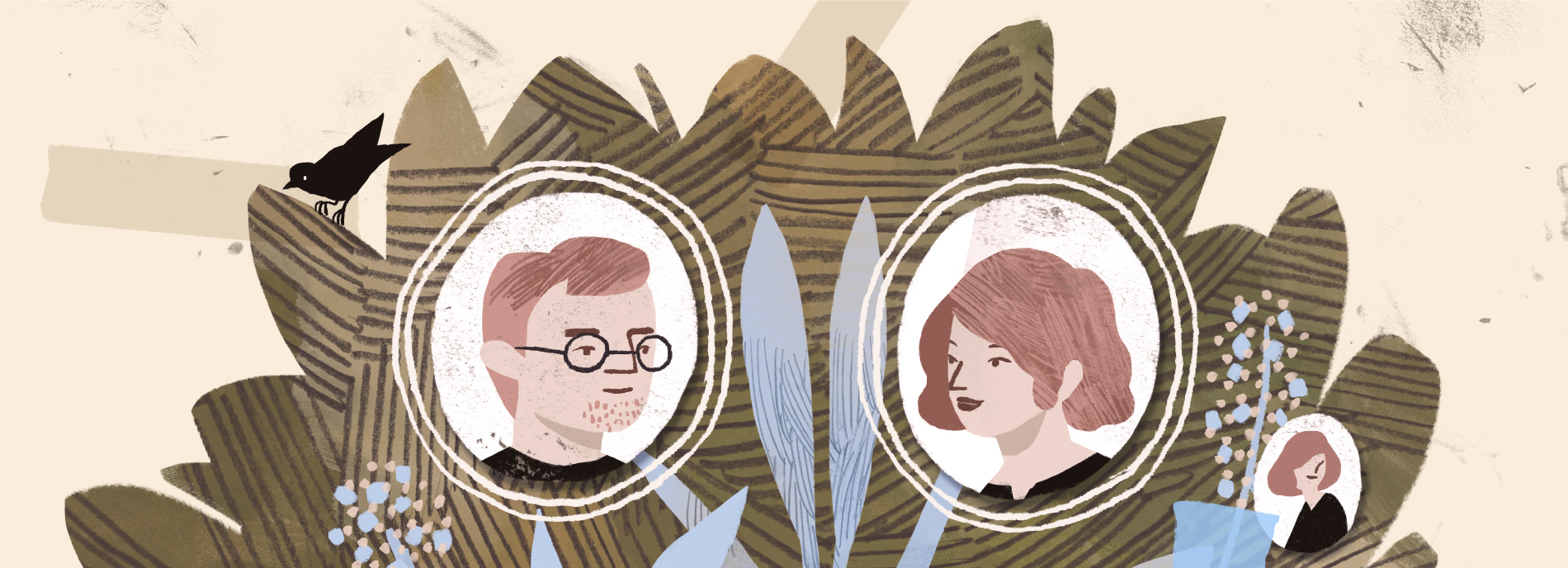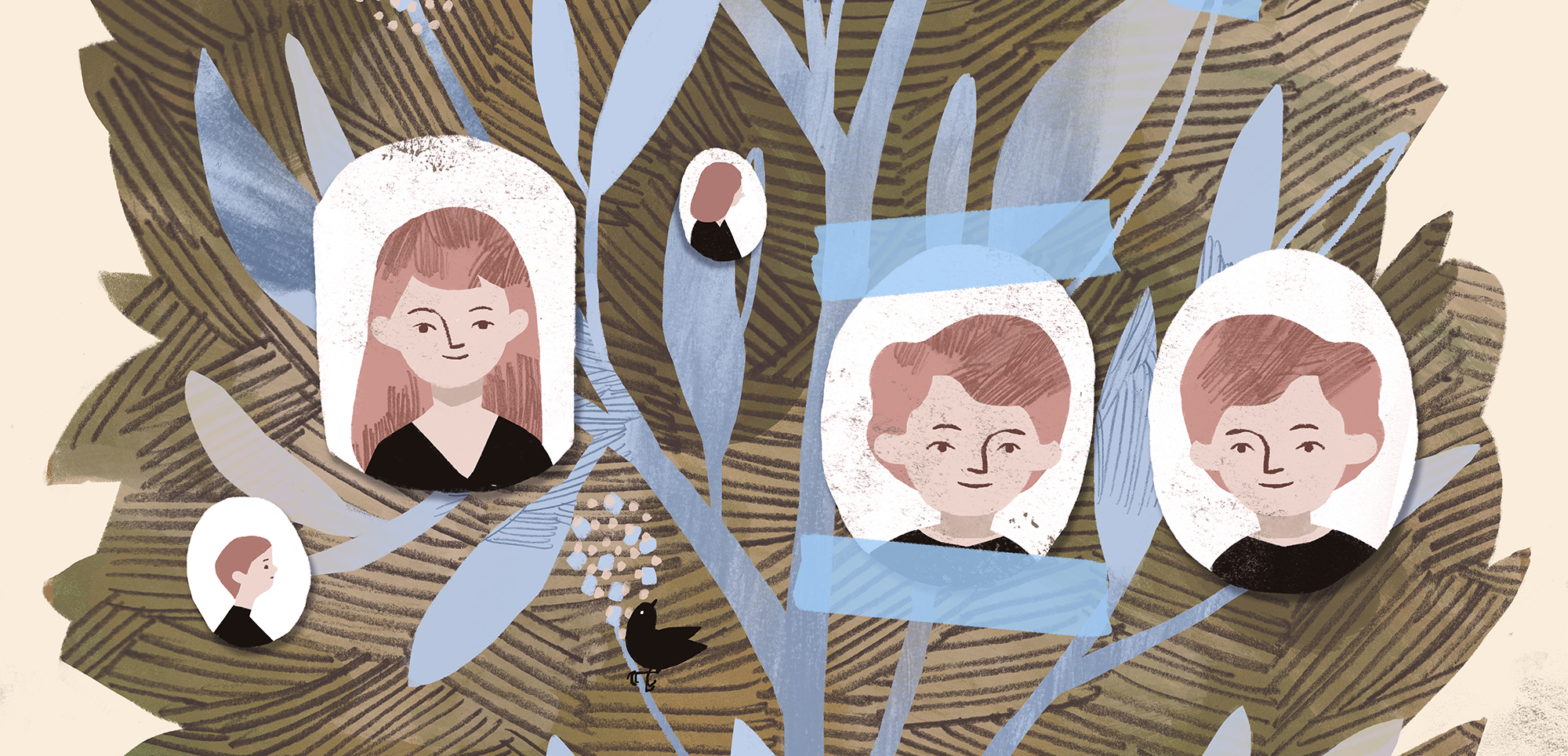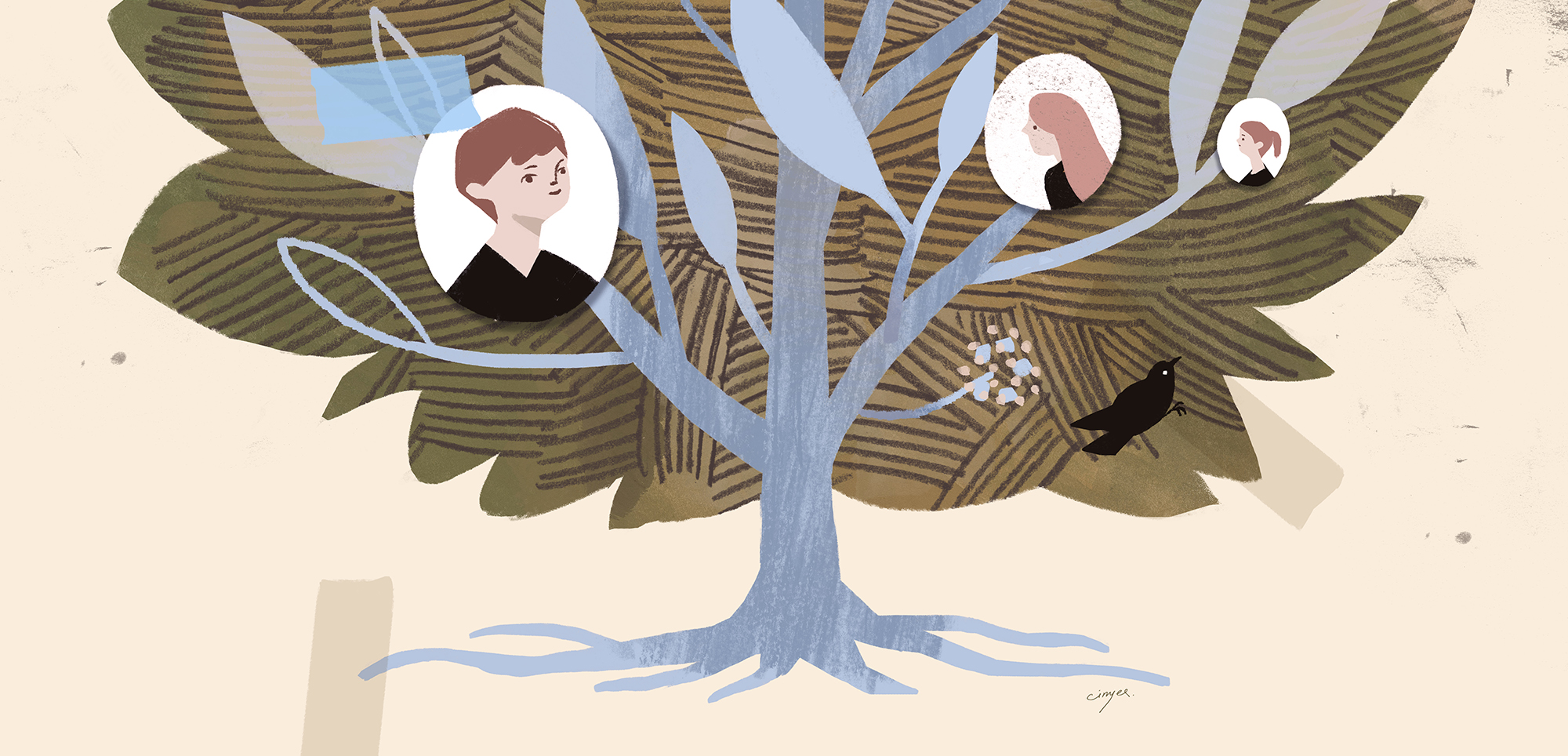
What the ‘broad spectrum’ can teach us about autism
The relatives of autistic people often have mild traits of the condition. Studying these family members could broaden our understanding of autism.
I
t wasn’t until Rebecca Wiesenthal’s oldest son, John, turned 3 and started preschool that she began to worry about his language development. John did not talk much and when he did, he used made-up words — such as “mop” for milk — that his teachers could not understand. “My husband had to make a dictionary for them so they would understand what he was saying,” Wiesenthal says. But she herself had been a late talker and had then suddenly produced full sentences at age 3. She figured her son’s language might follow the same pattern.By age 5, John was using the same words as his peers, although often in the wrong order — “like Yoda,” Wiesenthal says. After a teacher recommended he be tested for developmental conditions, the Wiesenthals took John to see specialists and eventually learned he has autism.
John, now 18, is not the only one in the family on the spectrum. His brother Benji, 15, was diagnosed as a toddler. (Two other brothers, Jesse and David, do not have the condition.)
More than a decade after John’s diagnosis, his father, Rallis, a rabbi, was also diagnosed with autism. “It explained a lot,” Wiesenthal says with a laugh. “[Rallis] is like John and Benji. That part of the family doesn’t do change well.” When she has to move furniture or replace bathroom fixtures, for instance, she says her husband has to leave the house and her two autistic sons try to put things back as they were.
In hindsight, Wiesenthal suspects that her late father, a science teacher, was also autistic. He was never diagnosed but was not social and, like many with the condition, could be rigid in his need for routine. “He didn’t like people coming to our house,” she says. Meals had to be exactly the same: “Monday, we had this; Tuesday we had this. We always had potatoes, meat and a veg; I had to fight to get rice or noodles.”
That half of the family is on the spectrum and half not makes the Wiesenthals interesting to Molly Losh, director of the Neurodevelopmental Disabilities Lab at Northwestern University in Evanston, Illinois. Losh is studying the ‘broad autism phenotype,’ a subclinical constellation of traits — social behavior, language differences, sensory sensitivities — that appears in up to half of parents and siblings of autistic people. These subtle traits in relatives do not add up to autism but still serve as useful phenomena to study the condition, Losh says. “We think of it as the distilled expression of autism’s genetic liability.”
Most of what scientists know about autism genetics so far has come from studying rare and spontaneous mutations with powerful effects. Much less is known about common genetic variants, which occur in at least 1 percent of the population and account for most of the inherited risk for autism. “These small genetic variations exist in all of us and together contribute to variability in complex human traits like language, cognitive styles and social functioning,” Losh says. She and others are trying to learn more about these traits and their underlying biology by studying families such as the Wiesenthals and identifying heritable traits, or ‘endophenotypes,’ that appear in these families.
“If you increase your genetic search to include not just autism but some of these other traits, you might be able to make the gene-interaction discoveries more expeditiously and accurately,” says Rebecca Landa, executive director of the Center for Autism and Related Disorders at the Kennedy Krieger Institute in Baltimore. The insights gained might also lead researchers to new opportunities for early treatment.
Meet the parents:
T
he concept of the broad autism phenotype sprang from landmark research by psychiatrists Susan Folstein and Michael Rutter. In 1977, they conducted the first twin study of autism, analyzing 21 sets of British twins, identical and fraternal, in which at least one sibling had the condition. They showed that autism occurs more often in both twins when the twins are identical, providing strong evidence of autism’s genetic roots. But even when only one twin has autism, the unaffected twin sometimes has delayed language and difficulties with spelling and reading. This finding led Folstein and Rutter to conclude that “autism is genetically linked with a broader range of cognitive disorders.”Folstein pursued this idea in the early 1990s, conducting some of the first studies of the parents of autistic children. Her team noticed, for example, that some parents of autistic children have mild language difficulties, recalls Landa, who worked with Folstein at the time. “Their conversational turns would be excessively long, or sometimes they had a lot of difficulty formulating their ideas.”
In 1991, the team sat down to compare notes with Joseph Piven, who had also been noticing characteristics such as rigid thinking in the parents of autistic children. Landa remembers Piven describing one father who had refused to mail a letter for his wife on his way to work because it meant he would have to alter his route. “What we realized was that these various traits we were noticing resonated with the characteristics of autism, but they were subclinical and not all family members had all these things,” Landa says.
The researchers described what they were seeing as the “lesser variant of autism,” Landa says. In a series of papers over the next five years, they reported a higher level of autism traits among the parents of autistic people than among parents of children with Down syndrome or typical children. Many of these parents also have an elevated prevalence of psychiatric disorders, especially anxiety, as well as problems with language and social skills. Losh and her team have found many of these same traits in women who have a child with fragile X syndrome, which accounts for approximately 5 percent of all autism cases. The women don’t have fragile X syndrome but carry a ‘premutation’ in FMR1, the gene mutated in the condition. “That some of these [traits in the mothers] look very much like those observed in the broad autism phenotype is exciting because it implicates FMR1 in features related to autism spectrum disorder,” Losh says.
Using an eye-tracking device, her team has also found some less obvious quirks in some parents of autistic children — including telltale patterns of attention and language processing that distinguish these parents from both typical people and autistic individuals.
“Boat … star … pencil.” Wiesenthal is calling out the names of objects in an array on a computer screen. She is at Losh’s lab on a wintry day in February to take part in some testing. Her eyes, monitored by the device, move from object to object, left to right and top to bottom, as if she were reading a page in a book. She hesitates for a second, then continues, “… chair … fish … key.” She has already done the same exercise with colors, letters and numbers. “I wonder how my father would do on this,” she says when she finishes.
The skill being tested is called ‘rapid automatized naming.’ It seems simple on the surface, but as people read, their eyes typically jump from one word or object to the next in movements called saccades. On the eye tracker’s monitor, these jumps show up as thin red lines that traverse the screen like unspooling threads. To register the word or object, though, the reader’s eyes must stop briefly on a point of fixation, represented by a red dot. The timing of this response requires the brain to sync sensory input, attention and executive function. “It is an indirect window into our cognitive ability,” says Kritika Nayar, a graduate student in Losh’s lab who leads this work.
In typical people, the eyes lead the way, looking one or two objects ahead of the one being named. Typical people tend to fixate on only one point, and they call out names fluidly, one after the other, as the red dot bounces steadily along. Autistic individuals name the objects on the screen less fluidly: Their gaze skitters around each object before settling on a fixation point, and they perseverate more in general, getting stuck on objects and looking back at previous items. On the monitor, the red dot mostly moves with their voice, not ahead of it.
Parents with characteristics of the broad autism phenotype, meanwhile, fall neatly into a cognitive middle ground. They perform more fluidly than autistic people but get stuck more often and fixate on more points than typical people do — something they would never notice in everyday life. (Losh shares results if participants ask; although those results are significant in terms of group differences, they are not necessarily meaningful for an individual participant.) The broad autism phenotype does not manifest uniformly across people who have it. But because this task is automatic and tied to specific brain circuits, it could be useful as a marker for both autism and the broad autism phenotype, Losh says. It could also help to find various genetic contributors to the condition. “This is a potentially more powerful approach to draw gene-behavior associations” than looking only at autism, she says.

A chance to intervene:
S
potting the broad autism phenotype also has important clinical value, beyond gene discovery: It may help scientists understand how autism traits evolve over time. “That’s why looking at these subclinical aspects related to autism is so important, not just for genetic studies but for being able to predict what would come later if things are untreated,” Landa says. She says she advises parents to seek out developmental enrichment for their children at the first sign of any delay. Don’t wait and see, she says, “act and see.”Some heritable traits of autism may appear well before the condition can be diagnosed. Studies in twins, for example, show that an infant’s preference for gazing at eyes and faces versus objects is tightly controlled by genetics. Babies as young as 6 months old who are later diagnosed with autism show a declining interest in eye contact, according to one 2013 study.
Not every baby who shows an early disinterest in eye contact goes on to be diagnosed with autism, however. The outcome may depend on what other genetic liabilities the baby has. For instance, research shows that having autism or the broad autism phenotype in the family stacks the deck toward an autism diagnosis for a baby disinterested in eye contact, amounting to a double genetic hit: “Those two [factors] are colliding with each other developmentally. Neither one is sufficient on its own, but the combination is particularly deleterious,” says John Constantino, professor of psychiatry and pediatrics at Washington University in St. Louis.
Constantino is searching for additional early traits that, coupled with family history, could provide opportunities to intervene. “If we knew what those discrete factors were and could individually target them before we target autism, we could head it off at the pass before those liabilities collide,” he says.
Two possible factors are a propensity for attention deficit hyperactivity disorder and problems with motor skills. In babies who have an older sibling with autism, poor motor-skill development at 6 months predicts an autism diagnosis at 24 to 36 months and weaker expressive language skills at 30 and 36 months. A separate study also found that problems with early joint attention, social communication and language at 14 months predict social communication difficulties at age 8 to 12 years, even in children later classified as having the broad autism phenotype, not autism. Therapies that address social challenges can benefit autistic toddlers, according to a 2011 study. “Catching this early could potentially alter the course of development in a positive way,” Landa says.
Whether there is a viable window for intervening is not known, but Constantino says he is optimistic for several reasons. Some girls are never diagnosed, even though as babies they may show the same traits as boys who are later diagnosed. This may be because girls are genetically less vulnerable to autism than boys are to begin with. But it may also reflect some sort of learned compensation. “Somehow they’re able to right the ship in ways that we would hope to be able to mimic through intervention,” he says.
Autistic girls and the sisters of autistic children may compensate by using more — or different — parts of the brain to manage social communication than autistic boys and neurotypical girls do, says Kevin Pelphrey, Harrison-Wood Professor of Neurology at the University of Virginia in Charlottesville. “Maybe there are these subtle social difficulties, but there’s this compensation and resiliency.”
Constantino also points to the “wiggle room” among some autistic twins who, despite having similar genetics, display traits that vary in terms of severity. At the 2019 International Society for Autism Research annual meeting, for instance, Constantino and his colleagues reported that twins are more likely to have different levels of autism traits if, as a pair, they have more severe traits overall.
That sort of wiggle room is evident in Kim Sebenoler’s identical twin sons, Mark and Jack, 18. Both have autism, but Jack has stronger language skills and greater social awareness. From participating in Constantino’s studies, Sebenoler discovered that she carries a rare genetic variant linked to autism, although she does not have the condition herself. Her daughter Sarah, 20, was diagnosed with autism three years ago. Sarah needs less support than her brothers but also has anxiety and depression. The youngest Sebenoler, Nicholas, 11, has attention deficit hyperactivity disorder but not autism.
Neither Sebenoler nor her husband, who she says is “super social,” knew of any autism in their families. But after their children were diagnosed, they remembered an uncle with few people skills who was unable to hold a job. Sebenoler says that, like all four of her children, she has some sensory sensitivities. For example, she has to put on vinyl gloves before she can touch raw chicken because she finds the texture so disconcerting. “I wonder myself how is it that I carry this,” she says. “I know I have my issues, but I don’t express that like any of my children.”
For many families, learning about the broad autism phenotype has real value outside the lab or clinic. When a parent realizes they might have attention issues or anxiety, or they aren’t picking up on subtle social cues, it can save their relationships, Landa says. “These things don’t just live in the autism circle.”
Pelphrey, who has a son and a daughter with autism, also says the idea of the broad autism phenotype is useful on many levels. “It’s a construct that helps you understand clinically how to interact with families,” he says. It also expands research possibilities by increasing sample sizes. He says he recognizes aspects of the broad autism phenotype in himself and in other people he knows. And beyond that, the broad spectrum of traits also makes for an interesting world, he says. “There is an element of preciseness that people with the broad autism phenotype can bring to the table, an ability to analyze and argue points that can be very important for a diverse society.”
When parents see themselves and their autistic children along this continuum, it can also provide a point of bonding. “I will have parents talk about how they recognize features of their kids in themselves in more subtle ways,” Losh says. One father told her that he and his autistic son enjoyed playing the trumpet together. “More than that, they shine their trumpets together because they both enjoy that meticulous detail-oriented routine.”
In the Wiesenthal family, father and son share an intense interest in Jewish tradition: Rallis spent nearly two decades compiling a just-published prayer book, and his son John is an expert on the finer points of Jewish law.
Rebecca herself went back to college a few years ago and is scheduled to graduate in May 2020 with a degree in health science management. The ceremony falls on a Saturday, during the Jewish Sabbath. And John, with his keen attention to detail, has already worked out that the building where it will take place falls within their eruv, the area in which observant Jews may walk on the Sabbath.

Recommended reading

Developmental delay patterns differ with diagnosis; and more

Split gene therapy delivers promise in mice modeling Dravet syndrome

Changes in autism scores across childhood differ between girls and boys
Explore more from The Transmitter

‘Natural Neuroscience: Toward a Systems Neuroscience of Natural Behaviors,’ an excerpt

